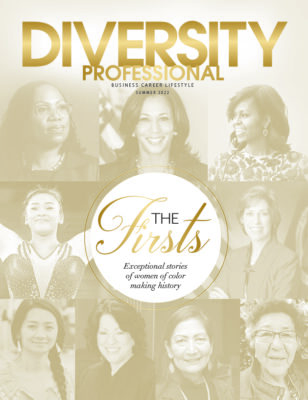Effectively Adapting Your Leadership Skills After A Major Career Change
Now, more than ever, professionals are looking for change. The Indeed Hiring Lab reports that 86 percent of individuals who are already employed but seeking new jobs are looking for work outside their current profession.
It may not surprise you that younger workers are changing jobs but, research has found, even those reaching retirement age are interested in a career change. A study reported by Prevention magazine found a growing number of people see their 40s, 50s and 60s as the right time to move to an entirely different profession. People are also working longer. Prevention reports 79 percent of baby boomers expect to work at least part-time after retirement.
Whether it’s millennials or baby boomers, people are changing careers for many reasons. Some are seeking new opportunities or higher earnings. According to a LinkedIn survey, the primary reason people change jobs is for career advancement, followed closely by dissatisfaction with leadership or the work environment. Another survey suggests 42 percent of professionals leave their job due to stress. Some people starting a new career later in life, or even retirement, may share these motivations but others, like me, may see this time as a chance for them to pursue their passion.
I spent over 30 years at BMO Harris North America. I served as executive vice president in corporate and commercial banking and managed hundreds of corporate and commercial banking employees. When I retired in 2010, I found myself jumping right into a new role as chief operating officer for the Women’s Business Development Center (WBDC) and, eventually, I was appointed president and chief executive officer.
The opportunity to hold a leadership role in a non-profit is, strangely, still rare for women. While women make up 75 percent of the nonprofit workforce, only 45 percent of CEOs or executive directors are women. This research reflects the disparities seen in the corporate world where, despite holding nearly 52 percent of corporate jobs in America, only 14.6 percent of executive office positions are held by women. These findings only further my drive to support other women interested in starting their own businesses or transitioning into a new leadership role—perhaps even at a non-profit.
While I had the opportunity to support female and minority businesses in my role at BMO Harris, my new position at the WBDC allowed me to jump feet first into my passion for supporting startups, as well as emerging and established business owners. Transitioning from the corporate world to a non-profit offered unique and exciting challenges but I knew my experience with BMO Harris prepared me to tackle these new tasks head on. I just needed to find an effective way to adapt my corporate leadership skills to a non-profit setting.
Undoubtedly, many people contemplating a career change— whether they are changing careers as a young professional, choosing a new profession later in life, or following a passion in retirement—are wondering how they can successfully navigate this transition. While change can be scary, it is important to remember that many of the leadership skills you have developed throughout your professional life remain relevant and you can easily adapt them to find success in a new arena.
Before you change careers, you must be clear on your motivation. I am lucky enough to pursue my passion every single day and I am a better leader because I am completely invested in the work I am doing. Are you looking to finally pursue a lifelong career dream or simply trying to leave a stressful profession for something less demanding? Taking the time to understand the reasons behind your move will help you successfully transition into a career that is right for you now.
Once you commit to your new profession and secure a new leadership position, recognize your strengths while embracing opportunities to learn. Every good leader should actively work to improve their skillset so they can more effectively lead their team. When entering a new profession, there are bound to be things—procedures, technology, etc.—with which you are unfamiliar. Take the time to improve your working knowledge of these crucial elements of your new career. Whether you need to take a course, read a book or simply ask an expert, taking the extra step to enhance these skills early on will save you a lot of time in the long run.
As you settle in, remain flexible. Things might work differently in this new profession. When I transitioned from the corporate environment to the non-profit world, I quickly learned that my ability to implement programs and initiatives depended on government funding, grants and support from our generous partners. I had to navigate this new way of “doing business.” The faster you can adjust, the faster you will be able to make a positive impact. Flexibility is key.
Be prepared to repeat these steps as necessary. Our world is constantly changing and leaders in every profession need to be ready to adapt to new situations. With a new Administration in control of the White House, the original approach I had to the quasi-public/private world of non-profits has had to change. I’ve had to adapt, be flexible and work with my team closely to effectively lead the WBDC through this new chapter. The most important thing to remember as a leader is that you are always adapting to the changes around you, even once you’ve become comfortable in your role.
Many leadership skills are universal if you are willing to adapt them to new environments. When making a big career change, taking the time to understand your motivation, embracing opportunities to learn new things and remaining flexible will help you successfully navigate this new endeavor.
SOURCES
http://fortune.com/2014/08/05/job-search-career-change/
http://www.prevention.com/mind-body/smart-advice-on-changing-careers/slide/1
http://www.prevention.com/mind-body/smart-advice-on-changing-careers/slide/1









